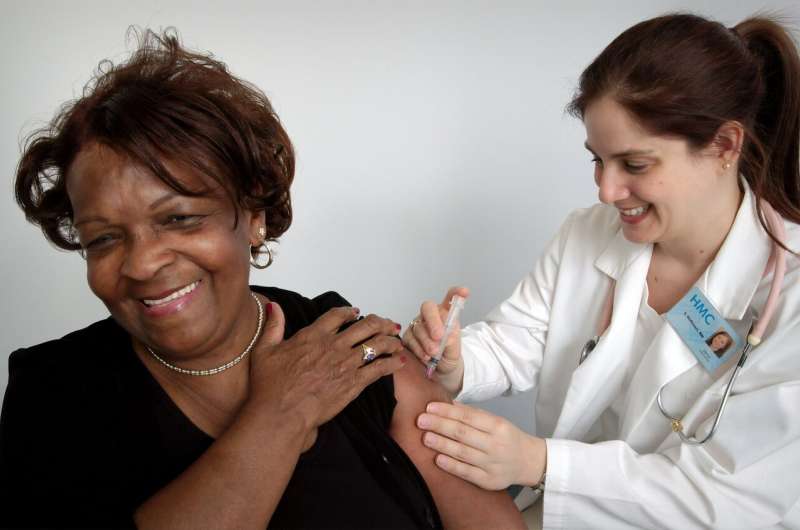Vaccine delivered via skin could help in fight against respiratory diseases

Among infectious diseases that have caused pandemics and epidemics, smallpox stands out as a success story. Smallpox vaccination led to the disease's eradication in the twentieth century. Until very recently, smallpox vaccine was delivered using a technique known as skin scarification (s.s.), in which the skin is repeatedly scratched with a needle before a solution of the vaccine is applied. Almost all other vaccines today are delivered via intramuscular injection, with a needle going directly into the muscle, or through subcutaneous injection to the layer of tissue beneath the skin. But Thomas Kupper, MD, chair of the Department of Dermatology, and colleagues, had reason to suspect that vaccines delivered by skin scarification may offer better protection against respiratory diseases. In a study published in npj Vaccines, Kupper and co-authors present results from preclinical studies suggesting skin scarification may help generate lung T cells and provide protection against infectious diseases, with implications for prevention of COVID-19.
"We have known for years that this technique was a good way to generate T cells that would home to the skin, but our study shows that skin scarification is also an effective way to generate T cells that home to the lungs," said Kupper. "Vaccine development today is focused on selecting the best antigen(s) for T cells and B cells. But for a vaccine to work to its full potential, it also needs to direct T cells to where they are needed most. For respiratory pathogens, that means getting T cells to the lungs."
Historically, smallpox vaccines used live vaccinia virus (VACV). More recently, the Food and Drug Administration has approved the use of modified vaccinia Ankara (MVA), a modern alternative that lacks about 10 percent of the parent genome and cannot replicate in human cells, thus avoiding the serious side effects seen with VACV. MVA, as a smallpox vaccine, is injected subcutaneously.
Kupper and colleagues set out to determine if the skin scarification route of immunization with MVA could provoke a more effective T cell response than other routes of immunization. The team inoculated mice using either skin scarification, intramuscular, subcutaneous, or intradermal injection. Skin scarification generated more T cells, produced greater numbers of lung-specific T cells and provided superior protection against lethal viral doses than the others.
"We used to think that lung-homing T cells could only be generated by direct lung infection, but here we find overlap between T cells appearing after lung infection and T cells generated through skin scarification," said Kupper.
The authors note that their work is preclinical—until clinical trials are conducted in humans, it's unknown if the phenomenon seen in the mouse model can be replicated in people. But the work has spurred the Kupper lab to explore the potential for using the MVA vector and skin scarification technique to develop more powerful—and, potentially universal—vaccines against other infectious illnesses such as influenza and coronaviruses.
"We have known for a while that you can program T cells to go where you want them to go in the body—if you want protective T cells in the lungs, this is one way to achieve that. It is a serendipitous finding, but it seems to work very well," said Kupper.
More information: Youdong Pan et al, Epicutaneous immunization with modified vaccinia Ankara viral vectors generates superior T cell immunity against a respiratory viral challenge, npj Vaccines (2021). DOI: 10.1038/s41541-020-00265-5





















